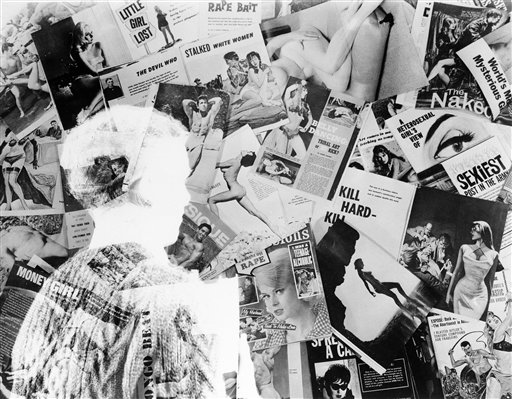The Redrup v. New York, 386 U.S. 767 (1967) decision and its companion cases, Gent v. Arkansas and Austin v. Kentucky (collectively known as the “Redrup group”), represent an important stage in the effort of the Supreme Court to establish a doctrine that could cope with obscenity cases.
The cases continued the Court’s struggle with determining when sexual material crossed the line from protected expression into unprotected obscenity.
State obscenity laws prohibited sales of sexual books, magazines to the public
All three of these cases involved the alleged obscenity of certain books and magazines offered for sale to the public.
Robert Redrup was a clerk at a newsstand in New York City who sold two such paperback books to a plainclothes police officer and was arrested under a state obscenity statute. The Kentucky case involved a similar transaction, except that both the clerk and the patron were female. The Arkansas case was an attempt on the part of the state to have certain issues of specific magazines declared obscene and to have their distribution enjoined by a state court.
All three cases arrived at the Supreme Court by approximately the same route.
Convictions were obtained at trial in Redrup and Austin, which the respective state appellate courts subsequently upheld. An injunction was issued in Gent, which also survived state appeals.
Court invalidated state obscenity laws, lays out guideposts for constitutionality
The Supreme Court, however, reversed all three judgments in a single per curiam opinion with two justices dissenting. The Court seemed to have little difficulty reaching a decision in these cases but failed to reach a consensus on the First Amendment doctrine it was enforcing.
Instead, it set up three guideposts against which the constitutionality of state statutes in each of these cases could be measured.
- First, the statute must reflect a specific concern for the protection of juveniles from exposure to obscenity.
- Second, it must guard against any “assault upon individual privacy” through a manner of publication so obtrusive as to make it impossible for the unwilling individual to avoid the obscene message.
- Finally, citing Ginzburg v. United States (1966), the Court said that the statute must target “pandering,” by which the Court meant a manner of advertisement permeated “with the leer of the sensualist.”
The statutes in all three cases failed all three tests.
Court could not unite on First Amendment doctrine of obscenity
As to a unifying doctrine of obscenity, however, the Court could do no more than allude to the four general views then held by the Court’s nine members expressed in such cases as Memoirs v. Massachusetts (1966) and Jacobellis v. Ohio (1964). The Court could only say that regardless of which of these four standards were applied to the facts of these cases, the state court decisions had to be reversed.
Despite the Court’s doctrinal vagueness, Redrup had an important impact on obscenity cases for at least the next several years. During that period, the Court would often overturn obscenity convictions citing Redrup, implying that the published material in question could not be held obscene by any standard currently represented on the Court.
The two dissenters, Justices John Marshall Harlan II and Tom C. Clark, tried and failed to press the Court into taking up and deciding the constitutional issue of obscenity. The Court eventually established such standards in Miller v. California (1973).
This article was originally published in 2009.

